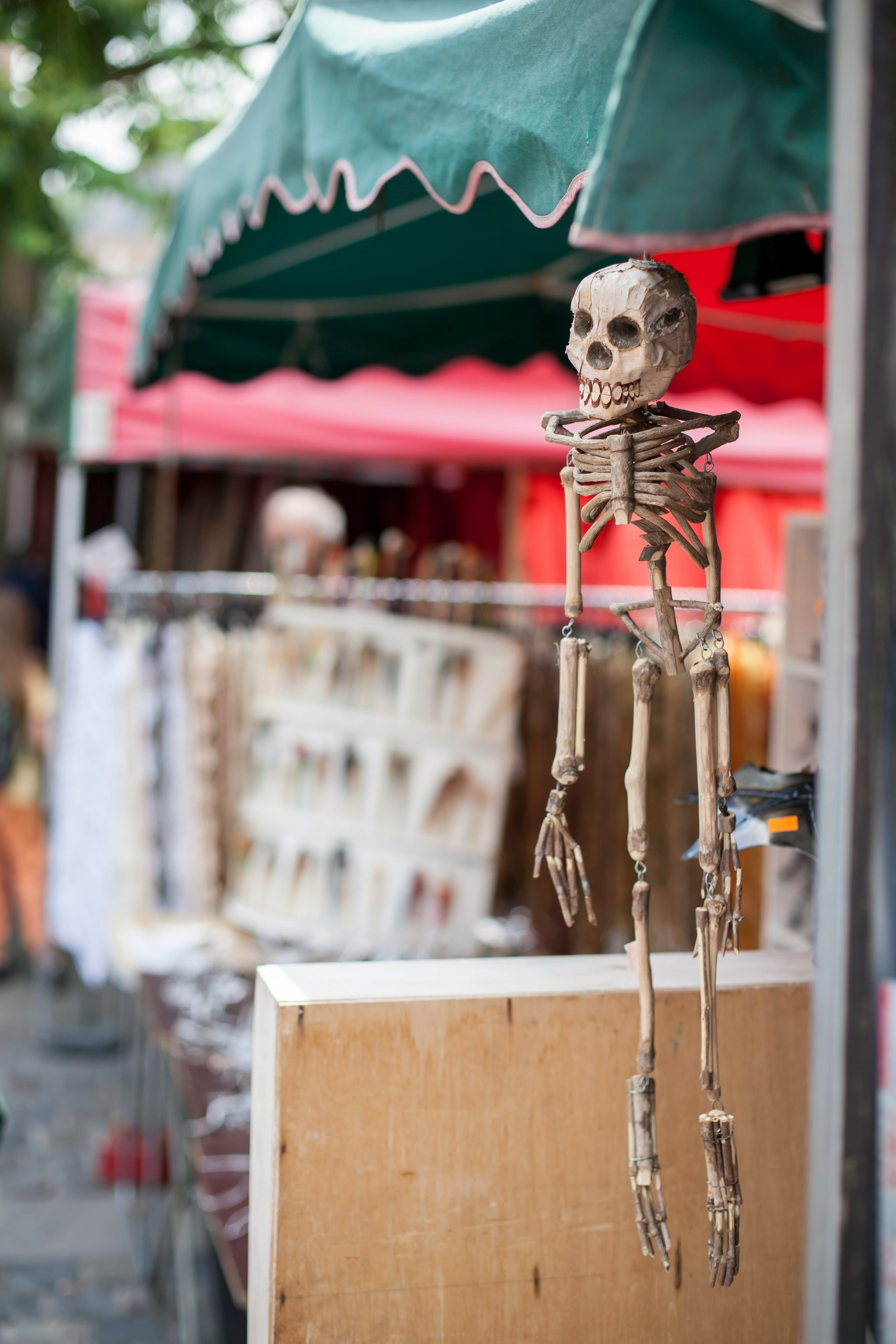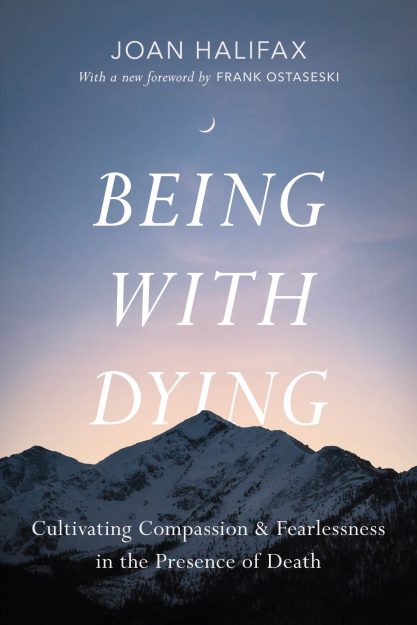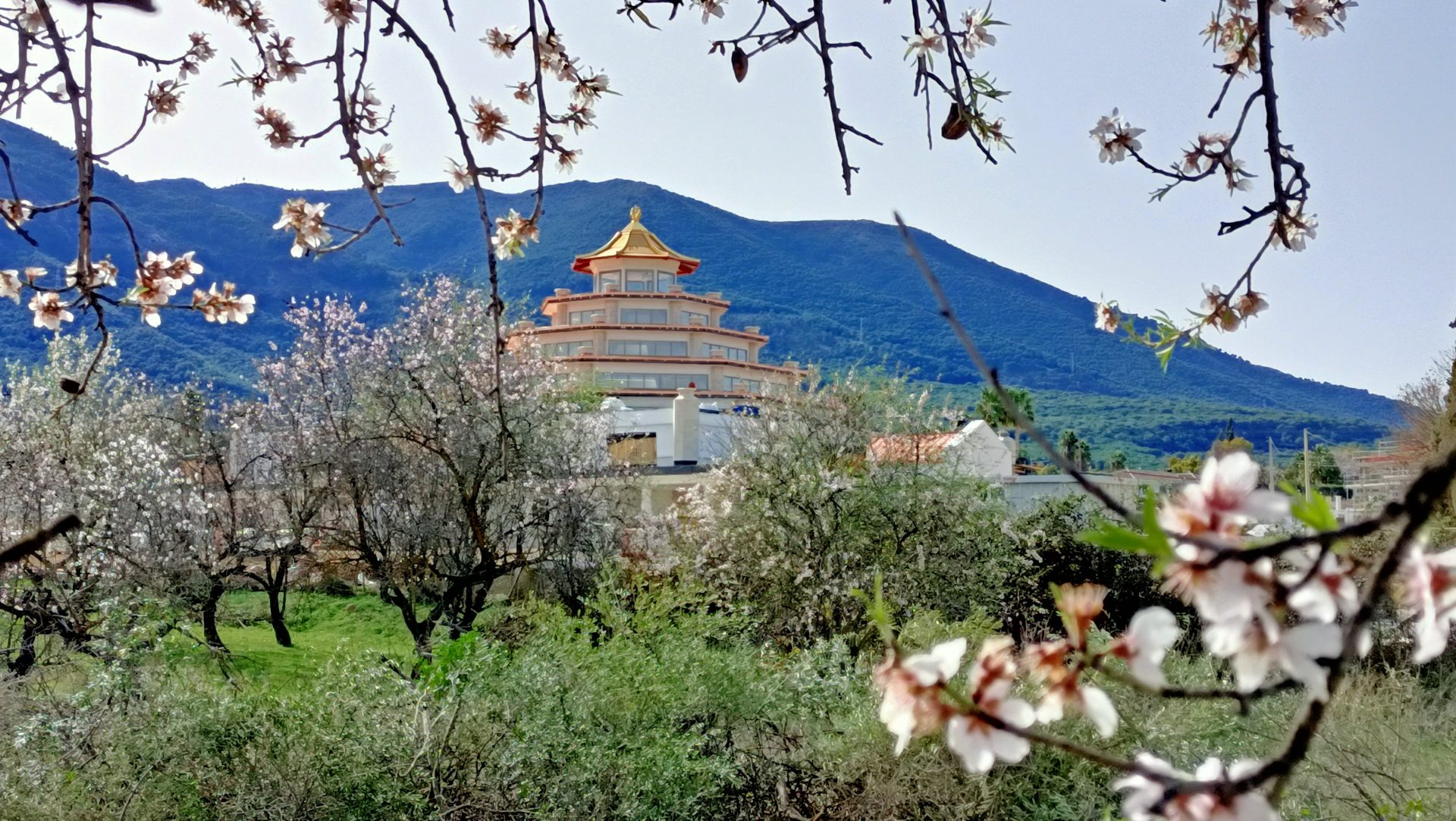The Wooden Puppet and the Iron Man
What two Zen archetypes of fearlessness can teach us about embodying compassion in the face of death and dying The post The Wooden Puppet and the Iron Man appeared first on Tricycle: The Buddhist Review.

Over the years people have asked me questions like “How can you touch someone whose body is covered with lesions?” “Isn’t it difficult to be around so much pain and suffering?” “Don’t people’s emotions overwhelm you?” “Isn’t it frightening to be around dying all the time?”
In the beginning it wasn’t easy. Working so closely with death often scared me; I was afraid I might get what the dying person had. When I recognized, however, that I already have what dying people have—mortality—I stopped being afraid of catching it.
Recognizing this very interconnectedness is the ground of giving no fear, and the beginning of compassion. Patient and caregiver are one and the same, connected by life and death as by suffering and joy. When we manage to step through fear by reconnecting with each other, real compassion arises.
Zen uses the images of the iron man and the wooden puppet to describe giving no fear. The iron man—or iron woman—embodies compassion through unshakable strength and equanimity. He exemplifies the three qualities of resoluteness, resilience, and durability. He’s not attached to outcome and has absolutely no interest in offering consolation—he expresses love without pity. With his deep equanimity, the iron man works from a pivot of intention that allows him to be fully present and immovable in this very moment. He puts himself in a difficult position and is strengthened by it as he offers strength to it. This is the very heart of our work with being with dying, this ongoing practice of sublime defeat, like a tempered sword, defeated by the fire and pounded to become strong.
The other Buddhist image for giving no fear is the wooden puppet, a very different kind of symbol for compassion. The puppet simply responds to the world as it is. There is no self; there is no other. Someone is hungry; food is given. Someone is thirsty; drink is offered. Someone is sleepy; a bed is made. For the wooden puppet, the world is the puppeteer to which she seamlessly responds without strategy, motivation, or thought of outcome. She can always be counted on because her front is soft and open; to be a wooden puppet is to bear witness and respond to suffering with a tenderness that knows no bounds.
The wooden puppet and the iron man both practice what I call “radical optimism.” They don’t have expectations about a specific outcome—about dying a good death, or being a perfect caregiver. And because they don’t have these ideas or expectations, they can really practice optimism. This kind of optimism arises directly out of not-knowing. It’s free of time and space, self and other—yet it’s embedded in the very stuff of our daily lives.
People often ask me about having a “good death.” But in the view of the radical optimist, there is no good or bad death. Being with dying is simply being with dying; each being does it their way. With no gaining idea, no attachment to outcome, the radically optimistic caregiver bears witness and gives no fear. An old Zen saying offers another way of putting it: “Fishing with a straight hook”—meaning, don’t look for results. Whether at the beginning, in the middle, or at the end, just exist in the right-now.
True compassion just does what needs to be done because it’s the only thing to do—just because it’s natural and ordinary, like smoothing your pillow at night.
A spiritual life is not about being self-conscious, or wearing a button that says “I’m a bodhisattva!” It is about doing what you have to do with no attachment to outcome. True compassion just does what needs to be done because it’s the only thing to do—just because it’s natural and ordinary, like smoothing your pillow at night. Sometimes the outcome can seem to be a happy one. And often enough we are faced with so-called failure. And thus it is.
There’s a famous Zen story about compassion that consists of a dialogue between two brothers, Tao Wu and Yun Yen. It goes like this:
Yun Yen asked Tao Wu, “What does the Bodhisattva of Great Compassion use so many hands and eyes for?”
Wu said, “It’s like someone reaching back, groping for a pillow in the middle of the night.”
Yen said, “I understand.”
Wu said, “How do you understand it?”
Yen said, “All over the body are hands and eyes.”
Wu said, “You have said quite a bit there, but you’ve only said eighty percent of it.”
Yen said, “What do you say, Elder Brother?”
Wu said, “Throughout the body are hands and eyes.”
This conversation seems kind of mysterious, until we think about what a “bodhisattva” really is—a Buddhist archetype of compassion and fearlessness, an awakened being who has vowed to come back lifetime after lifetime in order to save others from suffering. Bodhisattvas could leave our world of pain and suffering behind forever, but they deliberately choose to be reborn into the terrible and beautiful wilderness of life to practice compassion. Earthly bodhisattvas are those men and women, those wooden puppets and iron men, who have dedicated their lives to awakening these qualities—whether caregivers or those receiving care. In the metaphor Yunyan uses, they’re covered with eyes that see others’ needs and hands that reach out to help.
This exchange between the two brothers teaches us that true compassion, with its myriad hands and eyes, is every bit as natural and ordinary as pulling the pillow toward your head in the darkness of night. Then Daowu goes further: he observes that compassion is like the blood in our body, like the nerves running through our fingers—it is our whole being.
In total compassion, Daowu suggests, throughout the whole body, we feel and give no fear.
Years ago, a student of mine contracted kidney cancer while still a young man. One day as I was visiting him, he complained about his useless life of the past. Only now was he having a taste of what he thought was really important to him, a life that was not about making deals and making money, but a life that might be of help to others, a life where suffering was teaching him about humility and kindness, a life that was without hope, in the best sense of the word. In spite of pain after surgery and with an undetermined prognosis, his spirits were high and he felt an unusual optimism.
As it turned out, my friend’s cancer went into remission. During this period, he was grateful beyond words for what had happened to him. He was free of cancer, and his enthusiasm for life and his love of others was like a fresh lake after rain. He valued most especially the insight that he could now live a different kind of life if he wanted to. At the same time, he also expressed concern that he might forget and fall back into his old ways.
Robert Aitken Roshi once said that he was not so interested in the day you attained enlightenment—he was interested in the day after! As my friend feared, after a year went by, he forgot his commitment to his inner life as his old priorities again took hold of him. He went about his everyday living rarely giving thought to the fact that he had recently recovered from cancer. He went back into doing business, and we saw little of each other. When we did meet, he spoke only about money and women.
Several years later, when we met again, slightly wiser for his misery, he wondered aloud what had happened. He saw that the habit of materialism was so strong in him that not even the threat of dying of cancer had been enough to keep him on the path for long. He felt that he was living a lie and denying the gift of insight that had been given to him as a result of his illness. He felt deeply dissatisfied.
Another year went by, and my friend increasingly felt that life was meaningless. He found himself in another catastrophe, but this one was psychological: he was suffering from severe depression. He felt angry with himself and at the world, and helpless in the face of his habits of mind. As I sat with him, listening to him pour out his unhappiness and failure to find anything worthwhile in his life, I tried to let go of my expectations of a good outcome for my young friend. My only job was to bear witness to his suffering and at the same time to see his good heart steadily beating underneath all of his misery.
One day, he said to me, “You seem to see something that I don’t.” I asked him what it was that he thought I saw. He paused and then replied, “I think you see who I really am.” I asked him what that was, and he said, “I don’t know, but when you see it, I can feel it.” At that moment, we both relaxed and smiled together for the first time in five years. Although he had lost sight of the gifts suffering had brought him, he regained his vision. I felt glad that I’d borne witness to both his suffering and his true nature, so that he, too, could glimpse his own fundamental goodness.
Aspiring to awaken, or to benefit others, can be useful—it often helps with our priorities, just as having the goal of a sane and conscious death can help us to appreciate and relish this present moment. But if practice becomes a means to a “greater” end, then it becomes an investment—and we start expecting a profit. How can we be at one with a particular moment if we’re expecting something? How can we die freely if we’re fettered with the expectation of a so-called “good death?” And how can we really serve others if we’re attached to our particular altruistic outcome? When we first start to practice, and for a long time thereafter, altruism can give our practice body and depth. The commitment engendered by kindness helps us to remain steadfast when practice gets difficult. So the vow of the bodhisattva can be a skillful strategy at first, helping us to move away from our self-centeredness. Practicing for the well-being of others, we take a step away from the local, small self, and move toward the realization of our boundless interconnectedness.
But ultimately, the radical optimist realizes that there is no self, no other—no one helping, no one being helped. The radical optimist becomes like a wooden puppet responding to the world, her limbs pulled by strings connected to the world’s suffering. With time and experience we may develop a way of working with suffering rooted in raw and honest self-observation, and a view of reality that actualizes our awareness, equanimity, and compassion in seamless responsiveness to the world.
When the Zen teacher Suzuki Roshi was dying, one of his students went to say goodbye. Standing at his bedside, the student asked his beloved teacher, “Where shall we meet?” The old dying man made a small bow from his bed, and then the gesture of a circle with his hand. I think he was telling his student they were meeting right then and there, in form and in emptiness as well. Past and future were in that moment, and at the same time the past and the future did not exist—and there was no place to meet that could be greater than the openness and intimacy of that very moment.
The radical optimist follows that intimate path, the path of impermanence through the great ocean of change. She is one with the tides of transition, unresisting. A true bodhisattva, she surfs on the waves of birth and death, with no destination in mind as she rides along, no other shore to head for. Having realized unconditional acceptance and cast aside her expectations, she coasts on the crest of the wildest waves with effortlessness and total involvement. Choice has disappeared in her world. She is thoroughly alive; and she gives no fear.
♦
 Courtesy of Shambhala Publications
Courtesy of Shambhala PublicationsFrom Being with Dying: Cultivating Compassion and Fearlessness in the Presence of Death by Joan Halifax © 2008 by Joan Halifax. This edition published 2024. Reprinted in arrangement with Shambhala Publications, Inc. Boulder, CO.

 JaneWalter
JaneWalter 
































